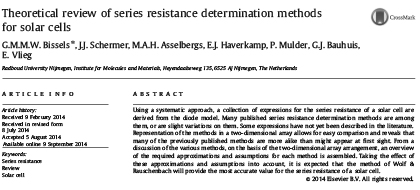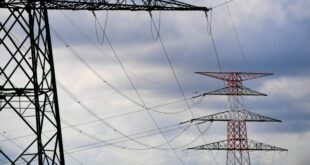The present study provides a systematic approach to derive a large collection of methods to determine the series resistance of a solar cell. Representation of the methods in the two-dimensional array presented in Table 1 allows for easy comparison and reveals that many previously published methods are more alike than might appear at first sight. Each method requires at least some assumptions and or approximations. some more influential than others. An overview of all the assumptions and approximations for the discussed methods is presented in Table 2. The approximation that is expected to have the largest influence on the value of Rs to be determined is the one where the general solar cell model is represented by the single-diode model.
Since the methods of Swanson. Aberle et al. and Wolf &. Rauschenbach do not require this approximation. it is expected that these methods will be the most accurate. Because these three methods all require two IV-curves measured at a different irradiance. they do rely on the assumption that nα and I0.α are independent of E. The method of Swanson also assumes that Rs is independent of E. while the method of Aberle et al. relies on the assumption that Rs2 5ðV2 V1Þ=ðIL1 I1Þ. Since the method of Wolf &. Rauschenbach requires neither of these last two assumptions. it is expected to be the most secure of these three methods. From a theoretical point of view it would. therefore. be preferable if the International Electrotechnical Commission adopted this method as its series resistance determination standard. instead of the method of Swanson [17]. One practical advantage that the method of Aberle et al. has over that of Wolf &. Rauschenbach is that its second IV-curve does not require an (accurate) change in irradiance settings. but is simply measured under dark condi
 Iran Energy News Oil, Gas, Petrochemical and Energy Field Specialized Channel
Iran Energy News Oil, Gas, Petrochemical and Energy Field Specialized Channel




